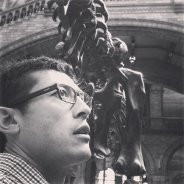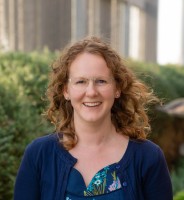Climate Change
Terrestrial Biodiversity
Trees, Forests & Deforestation
Carbon Cycle
Greenhouse Gases Emissions
Climate Adaptation & Resilience
Ph.D
United Kingdom
2013.04.28
Improving estimations of CO2 emissions under REDD+ scheme in Amazonian forests: better understanding for climate change mitigation
His works feeds into the REDD+ initiative (Reducing CO2 Emissions from Deforestation and Forest Degradation), which is an important strategy for reducing the effects of forest loss on the climate. This program provides incentives for developing countries to manage their forests better. Carbon credits earned for their good management, for instance, may be redeemed elsewhere for the development of other sectors. Diego Navarrete’s research will help ensure a more accurate distribution of carbon credits, improving Colombian REDD+ climate projects, as well as our understanding of carbon emissions provoked every time we change the Earth’s land cover.
Without the Forest, Calculating How Carbon Flows
In his own words...
I studied Biology at Universidad de los Andes in Colombia and a Master in Amazonian Studies at Universidad Nacional de Colombia within the research line of Ecosystems, Biodiversity and Conservation. During my BSc and MSc degrees I focused my research on establishing the pattern of litter decomposition, litter fall and phenology of Amazonian forests, as part of the carbon cycle in terrestrial ecosystems. In 2004 I received a scholarship from the Project for the Advancement of Networked Science in Amazonia (PAN-AMAZONIA) and the scholarship for Post-graduate Outstanding Students from Universidad Nacional de Colombia to support my MSc research.
After finishing my MSc degree I was involved in the ecological zoning process for environmental management of some regions in Colombia, gaining experience in community work and the use of Geographical Information Systems (GIS) and remote sensing tools. From September 2009 to September 2011 I worked for the Institute of Hydrology, Meteorology and Environmental Studies of Colombia (IDEAM) developing the protocols for the national and subnational estimates of biomass-carbon to support REDD+ projects in Colombia and estimating the carbon content in aboveground biomass and coarse woody debris (dead wood) of natural forests in Colombia.
From May 2011 I started working for Carbon Decisions International as Carbon Inventory Expert in REDD+, where I participated in the projects:
- Reducing emissions from avoided deforestation (REDD+) in the Multiple Use Zone of the Maya Biosphere Reserve in Guatemala;
- Baseline of emissions due to deforestation in San Martín region, Peru;
- Baseline of emissions due to deforestation in Cusco region, Peru;
- Emissions reference level in Ecuador;
- MRV system for REDD+ in Peru.
My current research focuses on establishing the pattern of carbon change post-deforestation on belowground biomass, soil organic carbon and dead wood carbon pools, in areas of forests converted to pastures in the Amazon and Andes regions of Colombia for the period 1990 – 2010, with the aim of improving estimates of CO2 emissions under the REDD+ scheme in the country.
PhD Project Summary
The aim of my research is to improve estimates of CO2 emissions under reducing emissions from deforestation and forest degradation initiative (REDD+) in Amazonian and Andean forests converted to pastures in Colombia, by establishing the pattern of carbon change over time after deforestation in below-ground biomass, soil and dead wood carbon pools for the period 1990 – 2010. The models of carbon loss derived from my research will contribute to strengthen the REDD+ strategy of Colombia, to reduce the uncertainty in estimates of CO2 emissions from REDD+ projects developed in the country, and to improve the knowledge of carbon emissions from land-cover changes.
To add or modify information on this page, please contact us at the following address: community.research@axa.com

Diego
NAVARRETE
Institution
University of Exeter
Country
United Kingdom
Nationality
Colombian
Related articles
Sustainable Living & City
Climate Change
Climate Adaptation & Resilience
Urban Planning
Resilient Infrastructure & Safety
Environmental Justice
Post-Doctoral Fellowship
Australia
2023.06.20
Indicators for Climate Resilient City Planning
Expected start date:June-2023 Cities contribute enormously to global greenhouse emissions and are key drivers of climate change. By the same... Read more

Melanie
LOWE

